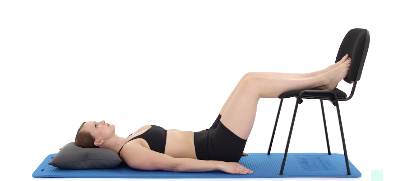Exercise and Heart Rate: Where should I start?
- Stenzel Chiropractic Clinic

- Jun 2, 2020
- 3 min read
Updated: Jun 11, 2020
Are you ready to start exercising, but you have no idea how to do it in a safe way? Everybody has a watch that monitors their heart and the "numbers" give a lot of information. We want to let you know what those "numbers" might mean before, during and after exercise and what you can do to improve your "numbers." As always, talk with your Healthcare Provider to ensure it is safe for exercise.

What is my "Calculated Maximum Heart Rate (CMHR)" and what does it mean?
Your ideal Maximum Heart Rate for your Age can be calculated by taking 220- your age. For example a 55 year old's maximum heart rate is calculated to be 165 beats per minute.

Tip:
This is a very important "number" to know so you can monitor your heart rate during exercise to reach your goals.
Why you need to know the "numbers":
It is certainly possible to exceed your Calculated Maximum Heart Rate, but it is NOT RECOMMENDED! Especially if you have a history of health problems. Although your heart rate may exceed its ideal Maximum Heart Rate during competition, it is important to control heart rate during non-competitive training to improve your exercise and cardiovascular results.
What to Monitor:
1. There are 3 important Heart Measurements during exercise that can help determine if you are training appropriately:
Maximum (90 - 100% of CHMR): It is recommended that persons who are very fit can safely train in this zone. Training with a heart rate in this zone is anaerobic exercise which helps increase speed and performance, and is not a good range for burning fat.
High Intensity (70 - 90% of CHMR): When training in this zone, interval training can help boost your maximum performance capacity.
Moderate Intensity (50 - 70% of CHMR): Training within this zone offers aerobic fitness, improved endurance, performance efficiency and fat burning as fuel for performance.
2. Immediately after you are done with your exercise, you should monitor your
2-Minute Recovery Heart Rate:
Recovery Heart Rate Interval is simply the time it takes your heart to slow down after exercise.
A good indicator of improved fitness is monitoring the decrease in heart rate after training in the Moderate to Maximum Rate Zones. In general, the faster your heart decreases in rate, the better your fitness and Vagal Nerve response (Wait? Nerves Respond to my Exercise?)
According to the New England Journal of Medicine, improving your heart rate recovery has been clinically shown to prolong life.
3. Lastly, knowing and regularly monitoring your Resting Heart Rate gives you much information such as:
According to the Journal Heart, a higher Resting Heart Rate is linked to decreased fitness level, higher blood pressure, body weight, and levels of circulating blood fats.
A normal heart rate range is between 60-100 beats per minute.
However, a resting heart rate between 81 - 90 beats per minute DOUBLES a person's risk of death.
A resting heart rate above 90 beats per minute TRIPLES a person's risk of death.
During training, a gradual decrease in Resting Heart Rate is a good indicator of improved cardiovascular health and training practices.

When your Heart Rate indicates you are Training too Hard:
When monitoring your Resting Heart Rate and you notice a lower heart rate with symptoms such as dizziness, increased fatigue, or other symptoms that may make you feel abnormal, you may need to seek medical attention.
This could be a result of an unrealized heart problem, and you should stop your exercise program and seek Medical Attention.
However, the lower the heart rate without symptoms, it can be a good indication improved fitness and improved cardiovascular health.
In many cases, if you see your Resting Heart Rate randomly going higher, this could be a sign of overtraining. It would be recommended to taking a day or two of rest to let your body recover.
If you ever think you are having a Cardiovascular Emergency, Please call 911 IMMEDIATELY

For more information about exercise and cardiovascular health, please call us at:
Mapleton Office: 507-524-4000
Blue Earth Office: 507-526-2211




Comments